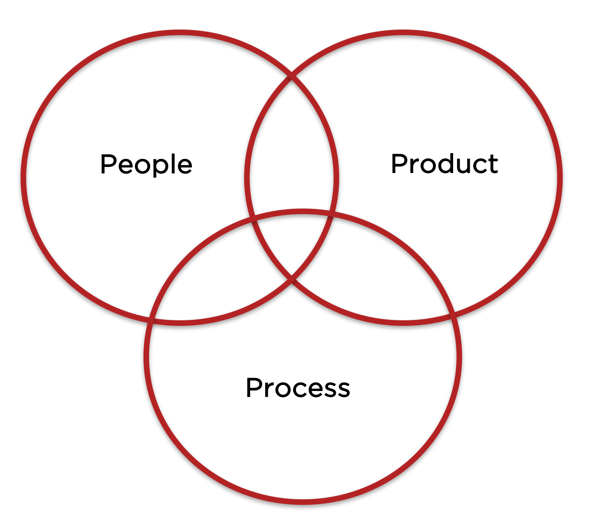Published on
Above the Noise: The Higher Education Highway (Part 1)

“At any given moment there is a sort of all-prevailing orthodoxy, a general tacit agreement not to discuss some large and uncomfortable fact.” George Orwell
In previous edition of Above the Noise, published by Eduventures, I presented an overview of the many internal and external factors impacting higher education today, and offered institutional leaders a series of metrics (or a “score card”) for self-assessing the overall health of their institution. Five “Mile Markers” (MM) were identified and attributed to a self-assessed score, the worst score being Mile Marker Five (MM5).
The response to the scorecard was overwhelmingly positive, with many presidents reporting their score to be lower than they had anticipated and often not consistently held across their key stakeholders (cabinet, trustees, etc.).
One university president said, “I assessed our institution to be at MM2, but nearly my entire cabinet put us at MM4. Needless to say, it made for a very interesting and long cabinet meeting that week.”
Institutions nearing or beyond Mile Maker 3 know that fundamental change is needed to place their institution back on a path to long-term sustainability. However, merely pointing out the challenges faced by these colleges is one thing; offering practical solutions to those challenges is another. That’s the intent of this piece.
Having the Will and the Way
The solution for those institutions that scored between an MM3 and an MM5—each facing a mounting fiscal challenge and an unpredictable path to long-term sustainability—is two-fold and quite simple. They need to have both the “will” and the “way” to change.
We’ll start by defining the “will,” as it’s the most difficult attribute to command, it’s in the shortest supply, and, frankly, without the “will” the “way” is meaningless.
The Will
Future economic and political circumstances will fundamentally change the role of a college president from one of building more buildings and growing the endowment, to that of the lead advocate for the fundamental transformation of the institution’s core academic product. In doing so, presidents must expect to take the hit from the wake of change that will undoubtedly come fast and hard from defenders of the status quo.
It will require senior academic leaders (presidents, provosts, SVPs, deans, etc.) to demonstrate a new form of leadership called, “stand-alone courage.” Nothing less will work. Nothing less will matter.
Many of today’s higher education leaders demonstrate this stand-alone courage—they come to work each day more focused on their current job, and less concerned about their next job. They are presidents, provost and deans who can sleep well at night, willing to face any vote of “no confidence” knowing that they are doing the right thing for their institution and, more importantly, the right thing for their students—present and future. We need more leaders like this.
Our campus libraries are full of books profiling people throughout history, and in all fields, who have demonstrated stand-alone courage, often losing their jobs for having the tenacity to take on the status quo. A few prominent individuals who have demonstrated the willingness to suffer the consequences of their strategic convictions include Steve Jobs, Walt Disney, Oprah Winfrey and Winston Churchill. Higher education boasts a host of new 21st Century leaders, such as Bruce Benson (University of Colorado), Todd Leach (University System of New Hampshire) Ali Houshmand (Rowan University), Mitch Daniels (Purdue University), and Michael Crow (Arizona State University), whose methods deserve serious study because of their proven accomplishments.
Finding new leaders with the aforementioned attributes and the will to take on the status quo starts with changing the hiring process for senior management, especially presidents, provosts, and academic deans. Trustees seeking exceptional individuals to lead their institutions must have an open and honest internal conversation of the current process used by most colleges for recruiting and hiring presidents, provosts and academic deans, which leads us to the “Way.”
The Way: People, Products, Process
Any successful business, be it a small candy store or a major research university must be strong at the “3 Ps” if it hopes to prosper. These are people, product and process.
Merely offering a product (e.g., courses or a degree), without strong people (e.g., faculty and staff) and a seamless process (e.g., student services) is a recipe for low perceived value and a downward spiral towards disappointingly low enrollment.
People
Given the people-centered culture of higher education—with strong respect for faculty governance—the first “P” (people) becomes paramount to fundamental transformation. You can have the most diverse catalog of courses and degrees (products), but without the right senior management to garner the support of the faculty, as defined above, the enterprise will eventually fail.
The Challenge: If you are a president of a small college who someday seeks to apply for a president’s position at a larger and/or more prestigious college (or a provost seeking your first job as president), you know that at some point in the selection process the larger college will send a cadre of people to your campus to ask a host of question of your stakeholders (faculty, staff, students, trustees, etc.) about their perception of your performance. If that cadre hears that you have pushed your stakeholders in ways they disapproved—regardless of the importance of those moves to the future of the college—you’re apt to go no further in the selection process. Many of today’s risk-averse senior “leaders” have learned to stay away from the “third rail” of higher education administration: namely, the academics (the product).
Is it any wonder, therefore, why just 30 percent of sitting provosts want to become presidents, according to a recent report from the American Council on Education?
The Solution: Given the growing economic and demographic challenges faced by colleges at or beyond MM3, it would behoove trustees to hire a president with a proven track record of challenging the status quo within an organization (stand-alone courage), and be willing to stand behind that person, publically and privately, when tough decisions need to be made.
Likewise, that president must be willing to hire a provost with the same attributes, who can assemble a team of academics able to reinvent the product. Simply put, the public is crying out for a better and more affordable higher education product. It behooves institutions to deliver on that demand.
This is the first installment in a three-part series by Kenneth Hartman exploring what it takes for an institution to reinvent itself for long-term stability in today’s postsecondary marketplace. In Part 2, he will discuss the Second P: Product.
You can reach Ken Hartman by email at kenhartman@kenhartman.com.
Click here to download the Institutional Maintenance Check List
Author Perspective: Analyst





